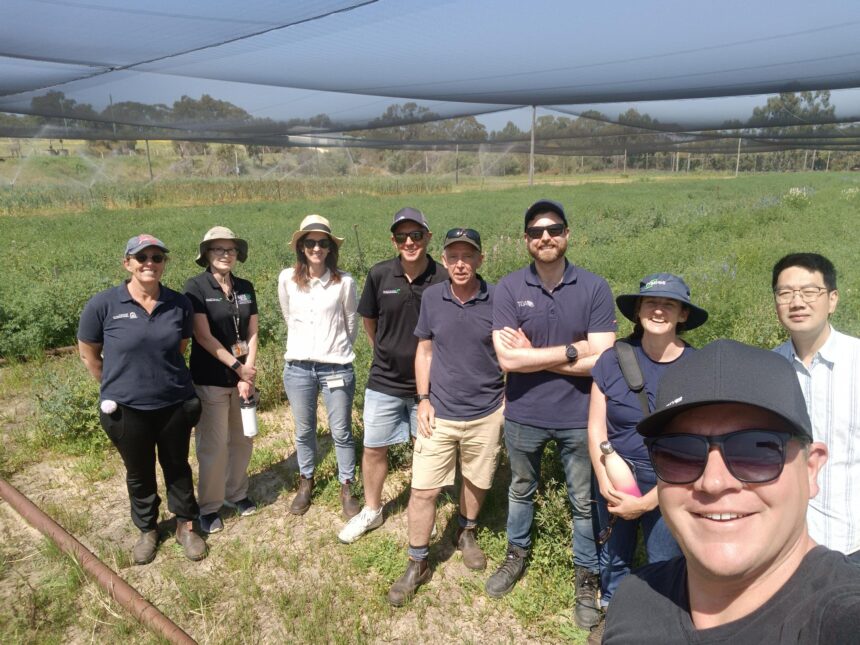In the heart of Western Australia’s grainbelt, a quiet revolution is underway in lupin research.
The Lupin Disease Resistance project, a multi-institutional effort, is tackling the persistent challenges of lupin diseases – phomopsis, anthracnose, cucumber mosaic virus (CMV), and sclerotinia – with a blend of field grit, genetic science, and cutting-edge technology.
As part of the project’s ongoing field activities, WA Agricultural Research Collaboration (WAARC) Strategic Research Manager Dr John Statton attended a field tour at Shenton Park last month, to observe firsthand the progress being made across trial sites and learn how the researchers are driving this collaborative initiative forward.
The Lupin Disease Resistance project is a co-investment between the Department of Primary Industries and Regional Development (DPIRD), Grains Research and Development Corporation (GRDC) and WAARC.
Led by DPIRD, the project benefits from the collaboration of Curtin University, Murdoch University and Australian Grain Technologies (AGT).
Together, these partners are working to future-proof lupin crops through enhanced disease resistance and improved screening methodologies.
Genetic resources (diversity core set)
To broaden the genetic diversity available to lupin breeders, the project has selected a core set of diverse narrow-leafed lupin germplasm.
This material comprises more than 400 lupin lines from 20 countries, including Australian and international cultivars, international breeding lines, and wild introductions.
This material has been gentotyped through Murdoch University and will be phenotyped in field and glasshouse testing to identify new or alternate sources of resistance for the target diseases.
Stem and pod phomopsis: A hidden threat
Phomopsis, caused by Diaporthe toxica, is not primarily a yield issue, it’s a safety issue.
The fungus produces phomopsin, a mycotoxin that causes lupinosis, a serious liver disease in livestock. Infected seed can also pose risks to human consumption, where tolerance levels are expected to be near zero.
The disease expresses in two forms:
- Stem phomopsis which remains latent until plant senescence.
- Pod phomopsis which infects the pods and seed during maturation.
Stem phomopsis phenotyping is carried out in the glasshouse on artificially infected seedlings in a process that mimics the natural expression of disease in senescing stems.
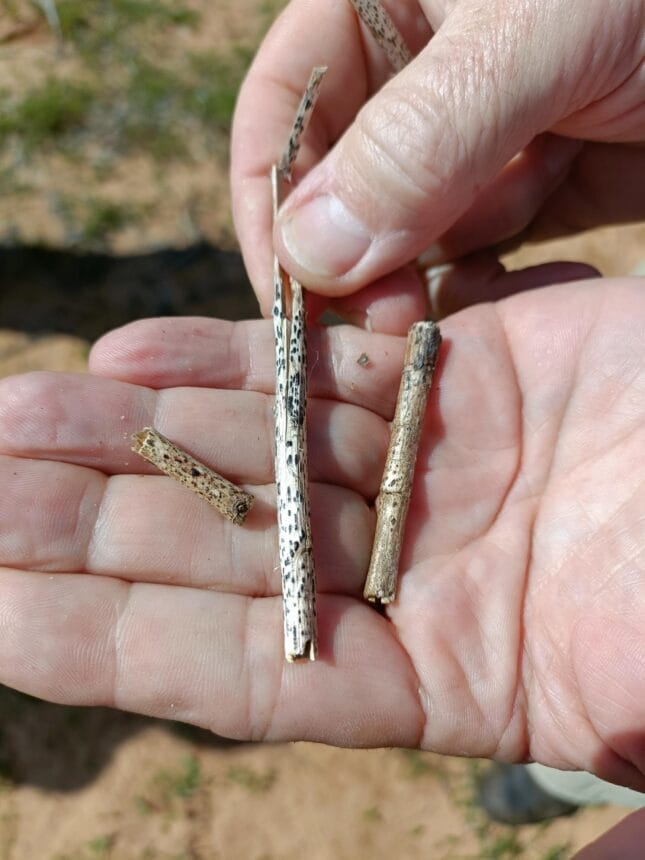
Pod phomopsis field trials at Shenton Park use infected stubble from susceptible varieties to induce natural infection.
“We rake up stubble from Wongan Hills and lay it under the plants,” DPIRD Research Scientist Dr Elaine Gough said.
“It’s a simple but effective method to screen for pod and seed phomopsis resistance.”
To improve reliability of infection, the team has introduced irrigation during dry spells and is trialling AI-based imaging to automate seed scoring.
DPIRD Principal Research Scientist Geoff Thomas said the infected seeds showed a yellow-orange-brown discoloration.
“But lupins naturally have speckles, so distinguishing infection is tricky,” Mr Thomas said.
The project is also exploring herbicide desiccation to induce stem symptoms earlier, allowing for high-throughput screening of large populations.
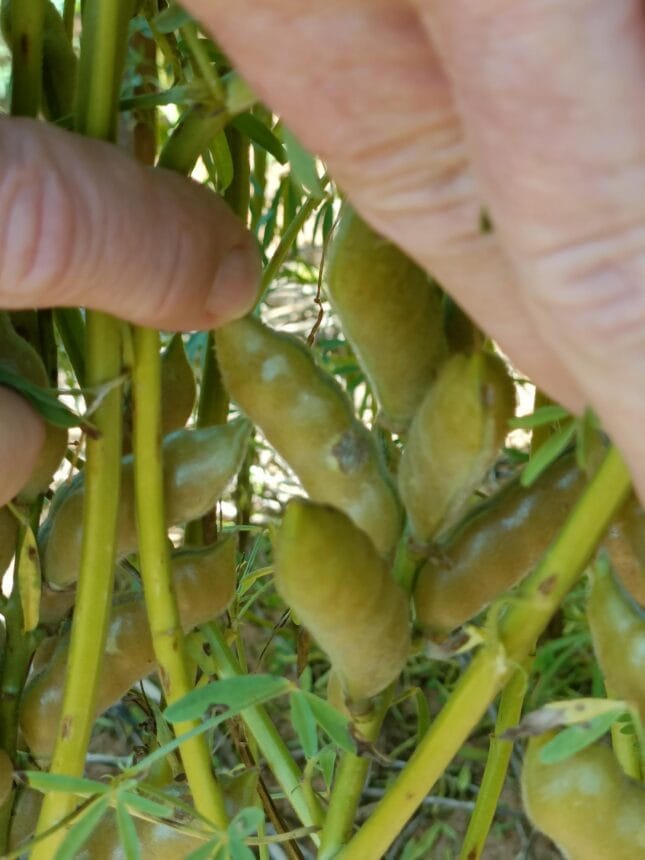
Anthracnose: The most advanced front
Anthracnose, caused by Colletotrichum lupini, is the most damaging lupin disease in WA.
It spreads via rain splash and infected seed, and its impact can be devastating.
The project’s anthracnose nursery is described as “set-and-forget” – a reliable, high-throughput system that scores rows on a one to nine scale.
“We’re seeing promising resistance in several lines, especially with wild genetics introduced into the breeding pool,” Mr Thomas said.
“The disease is particularly aggressive in reproductive tissues, making pod resistance a key breeding target.”
“Vegetative tissue is inherently more resilient, but pods are vulnerable, and stacking resistance genes could improve end-of-season outcomes.”
The team has nearly completed screening the diversity core set, with full coverage expected by 2026.
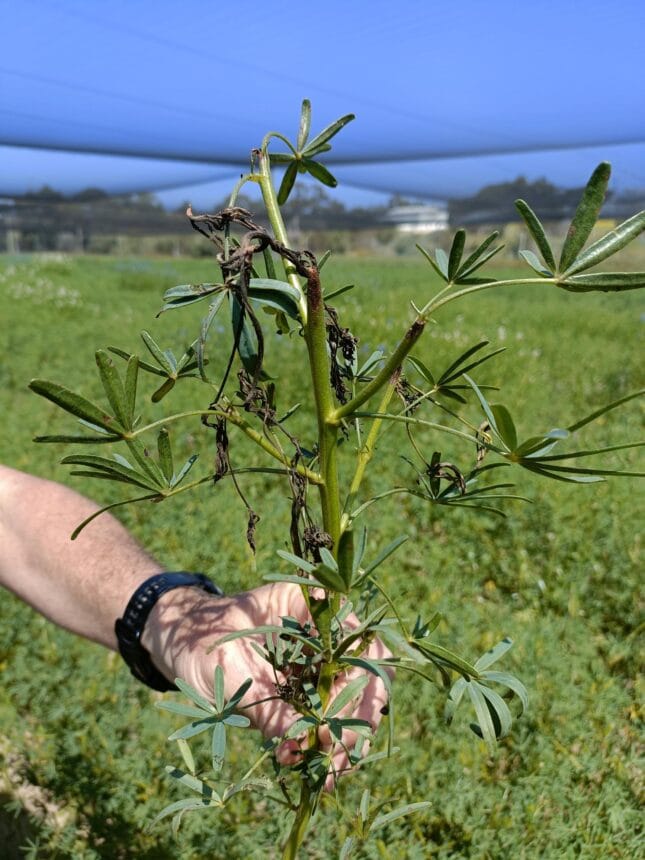
Cucumber Mosaic Virus (CMV): The silent saboteur
CMV is often asymptomatic but can cause complete pod abortion and severe yield loss.
Transmitted by aphids and seed, it’s a persistent challenge for breeders.
The project is trialling mechanical inoculation using syringes and pressure sprays to replace reliance on aphid transmission.
“It looks like it’s working,” Dr Gough said.
“We get 90 per cent infection and can control timing precisely.”
The team is also investigating early detection methods.
By correlating viral load in leaf, flower, and pod tissue with seed transmission rates, they hope to reduce the time-consuming Enzyme-Linked Immunosorbent Assay (ELISA) testing post-harvest.
ELISA is a laboratory technique used to detect the presence of specific proteins associated with viruses, antibodies or hormones in biological samples.
“If we can detect resistance earlier, we can make selections before the season ends,” Mr Thomas said.
This would be a game-changer for AGT and other breeding programs.
Despite decades of screening, no immune varieties have been found.
Tanjil remains the best option, with less than one per cent seed transmission.
Higher levels of resistance are likely to be quantitative involving many genes or quantitative trail loci (QTLs).
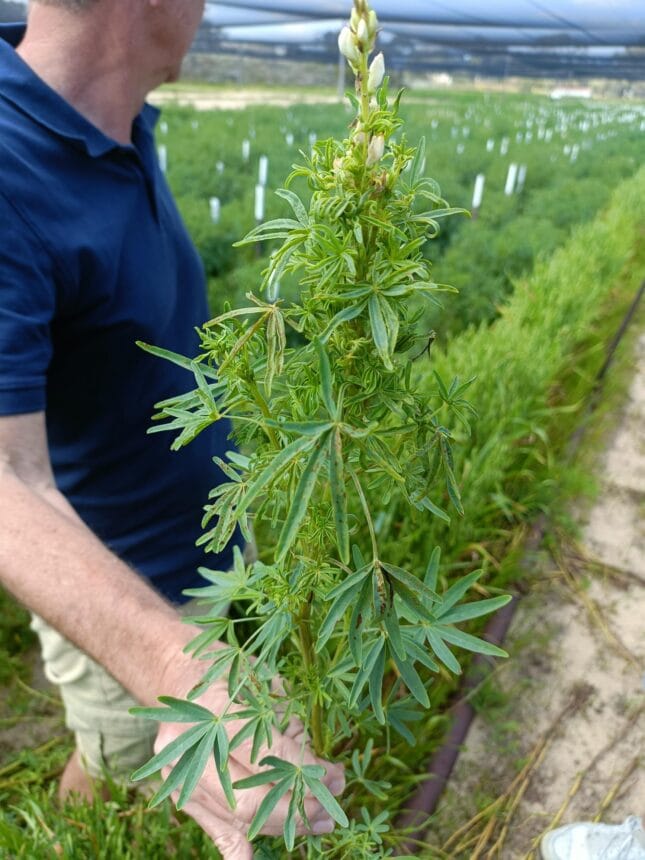
Sclerotinia stem rot (SSR): The emerging menace
Sclerotinia, caused by Sclerotinia sclerotiorum, is a sporadic but increasingly problematic disease in lupins.
It causes stem collapse and grain contamination, leading to yield loss and potential grain cleaning costs.
Curtin University leads the SSR component, trialling various inoculum carriers in glasshouse and field settings.
“Red rice has emerged as the most effective and scalable option for high throughput field screening nurseries,” Curtin’s Centre for Crop and Disease Management (CCDM) Research Fellow Dr Pippa Michael said.
During a field tour at DPIRD’s Northam field site on 19 September, as part of the 5th Australian Pulse Conference, Curtin University School of Molecular and Life Sciences Professor Sarita Bennett spoke to tour participants.
“SSR resistance is polygenic, meaning multiple genes are involved in controlling the plant’s resistance to the disease, and no complete resistance has been found in any crop, currently there is no resistance identified in narrow-leafed lupin” Prof Bennett said.
The project aims to identify sources of resistance in the diversity set and develop genomic prediction models to introduce partial resistance into AGT’s lupin breeding program.
Collaboration and impact
The project is a model of collaborative science.
DPIRD leads field operations and disease screening in anthracnose, phomopsis and CMV.
Curtin University drives Sclerotinia research and imaging, while Murdoch University leads genotyping and genetic analysis.
AGT integrates findings into commercial breeding, and WAARC ensures strategic alignment with Western Australia’s agricultural priorities and provides funding.
The work builds on decades of GRDC investment and international research.
Lupin Disease Resistance alliance
What is emerging from this collaboration is more than just data – it’s alignment and capability across industry and institutes.
This team has developed an exceptional system for screening, testing, and developing resistance pathways to the four major diseases affecting lupins in WA and nationally.
The synergy between institutions is palpable, with researchers, breeders, and pathologists working seamlessly across sites and disciplines.
At the conclusion of the recent field tour, Dr Statton from WAARC prompted a lively discussion by asking, “What’s a major benefit of this project outside of the data, and where to next?”
The answer was clear: the team that has come together through this collaboration.
The strength of this multi-institutional partnership has not only accelerated progress but laid the foundation for future innovation.
There were excited and healthy discussions about what lies ahead, from integrating advanced imaging and molecular diagnostics to exploring international germplasm exchange.
The team is well positioned to expand its reach, bringing in new expertise to strengthen the screening and resistance pipeline.
“They’re like a delta force for lupin disease – targeted, coordinated, and highly effective,” Dr Statton said.
Lupin Disease Resistance field tour attendees: Geoff Thomas (DPIRD), Dr Elaine Gough (DPIRD), Dr Lars Kamphuis (Curtin University), Dr Pippa Michael (Curtin University), Rachael Crockett (Curtin University), Dr Gaofeng Zhou (Murdoch University), Dr Matt Aubert (AGT), and Dr John Statton (WAARC).



